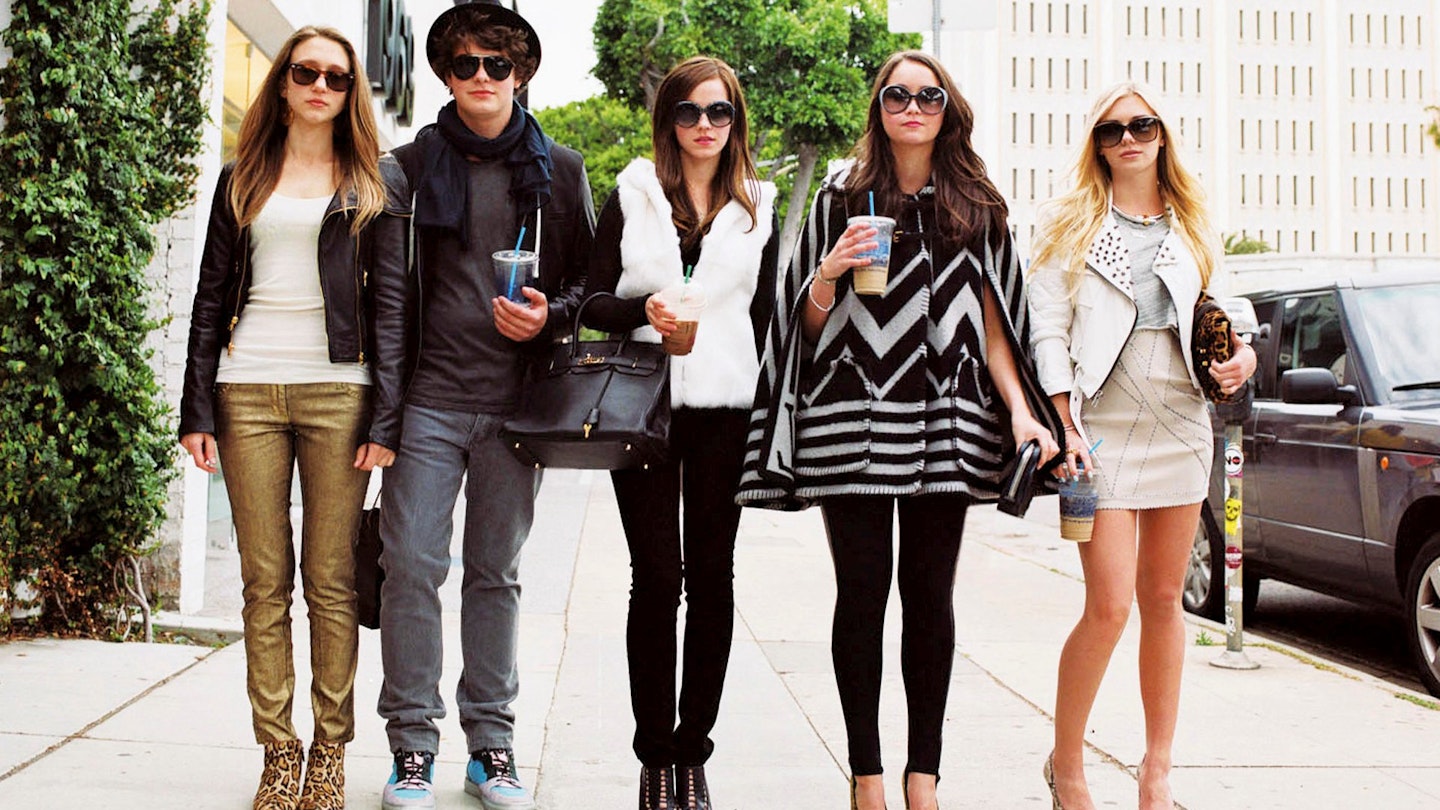With the director of The Godfather and Apocalypse Now for a dad, a Moonrise Kingdom writer for a brother and, yes, Ghost Rider for a cousin, Sofia Coppola has movie making in the blood. She has turned that family tradition into a successful filmmaking career as one of Hollywood’s most distinctive voices – as fans of Lost In Translation, Marie Antoinette and The Virgin Suicides, among others, will testify. Now with The Bling Ring she brings her stylish aesthetic to bear on a story of idolatry, crimes and Versace dresses. Empire took her back, film-by-film, over her career to date.
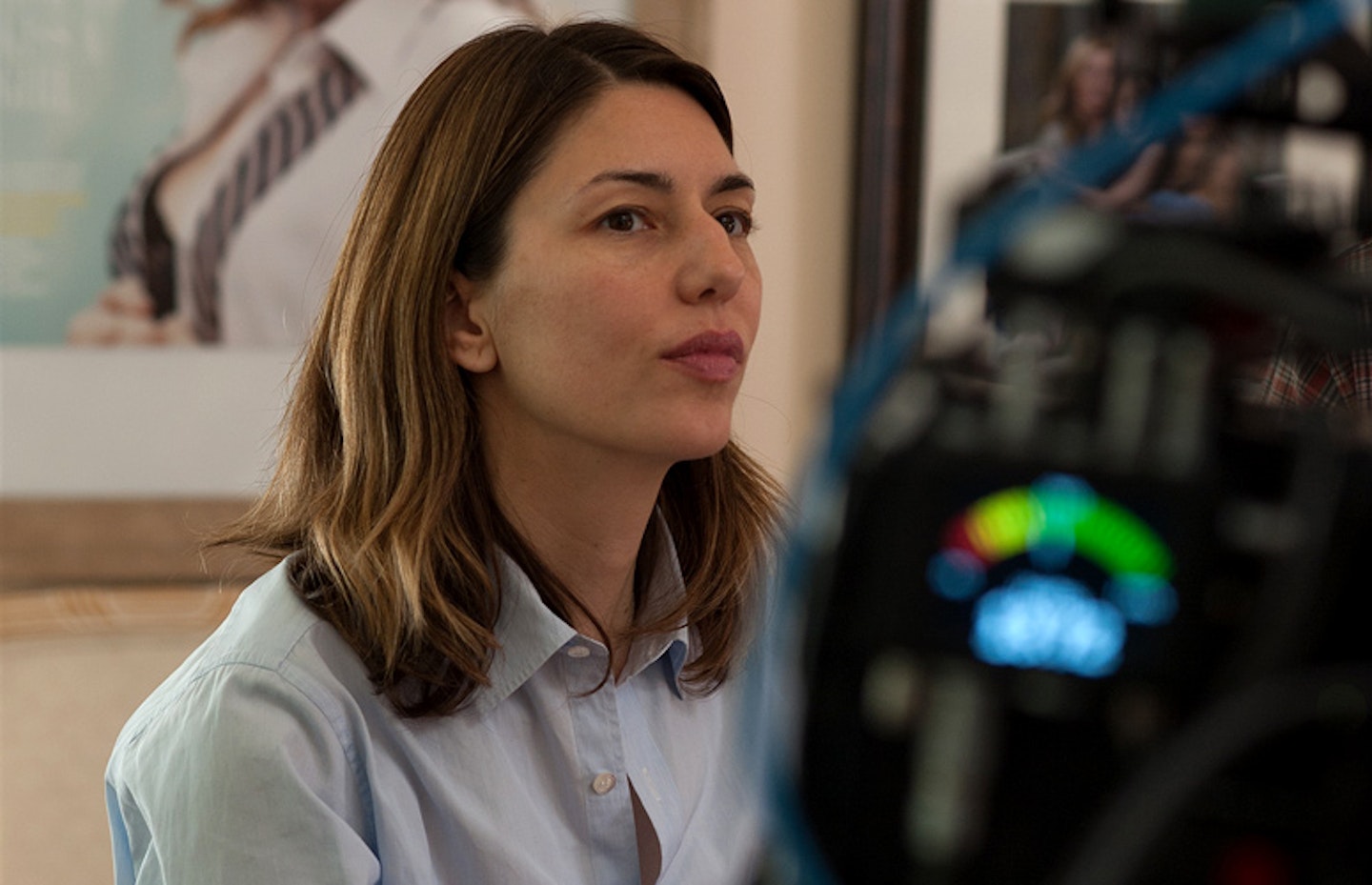
Sparked by a Vanity Fair article called ‘The Suspects Wore Louboutins’ Sofia Coppola came across in the seatback pocket of a commercial airliner, The Bling Ring centres on a gang of Gen Z fame worshippers with a line in housebreaking. Like Ocean’s Eleven with a more advanced sense of entitlement, their ambitions stretch to establishing lifestyle brands and cleaning out Paris Hilton’s jewellery drawers.
“My first thought when I read it was, “Wow, this’d be a great movie.” I started looking into the rights for our family film company, American Zoetrope, but assumed someone had already secured them because it had all the elements of a fun movie with an interesting look at this [social] phenomenon. Also, this true-crime story was so unlike anything I’ve ever done, so it was like interesting to figure out how to do it in my own style. At first, they seem like a group of unsympathetic characters – and how do you make a movie about them? But with the boy, Nick, for instance, you see how he got fucked up and wanted to be part of this crowd. [Cinematographer] Harris Savides’ daughter was my dialogue consultant. She’d say, “Me and my friends mostly call each other ‘sluts’, ‘whores’ or ‘bitches’.” The slang wasn’t that that foreign to me or that different to the ‘80s. There’s still lots of ‘totally’s.
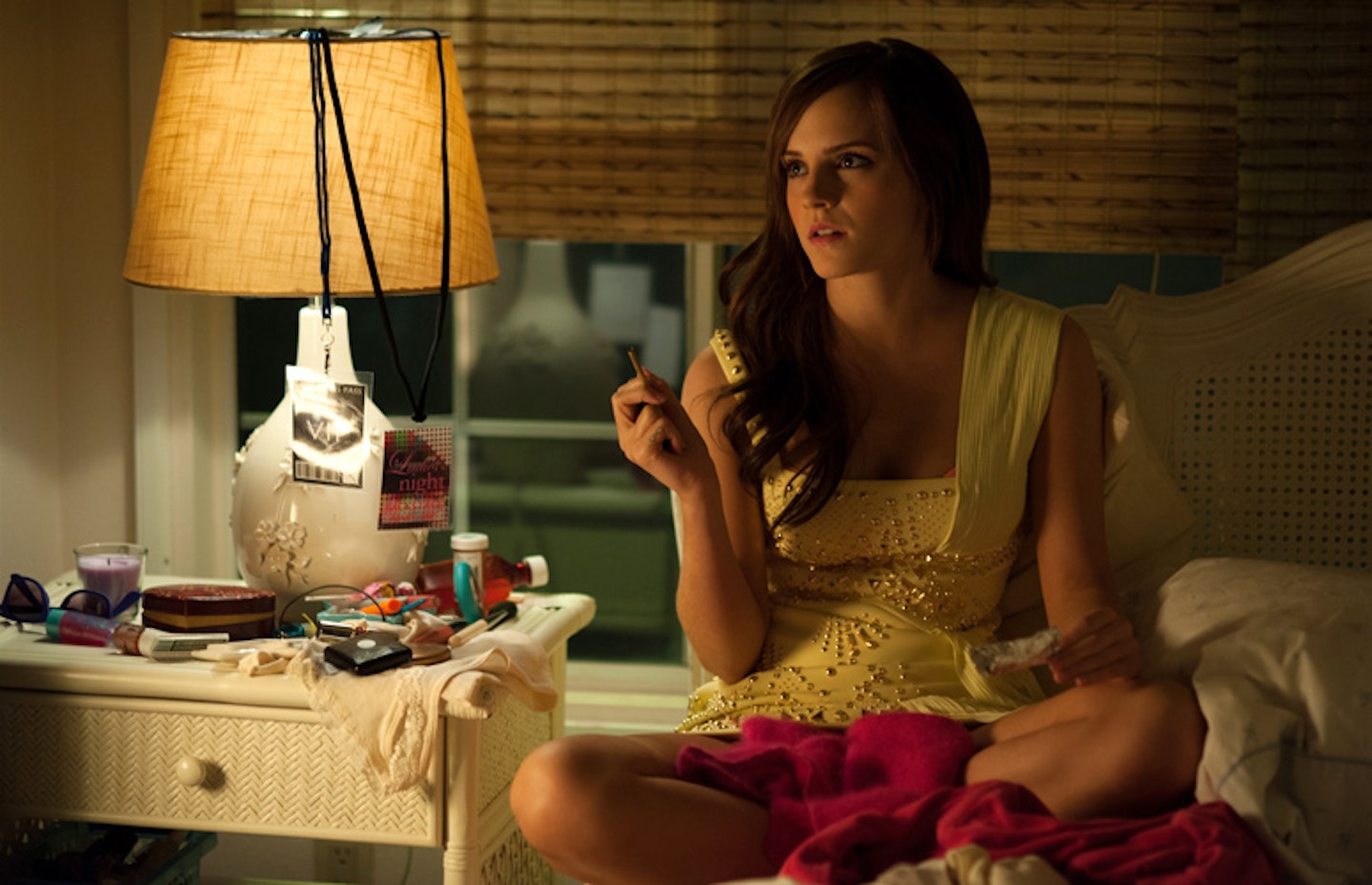
Bling Ringleader-cum-“future national leader”, the light-fingered Nicki Moore is played by Emma Watson. She’s based on Alexis Neiers, now a 22 year-old mum and former reality TV star, but at the time, in the words of Vanity Fair, the head of the ”most successful and outrageous burglary gang in recent Hollywood memory”.
“That’s Nicki smoking something illegal off tinfoil in her bedroom, surrounded by prescription pills and VIP passes. She’s wearing the Versace dress they stole from Paris Hilton’s house. [The Bling Ring] were from the Valley, just over the hill from Hollywood: this beige, suburban world. It’s not glamorous and they were striving to be a part of glossier world. Nicki does such a great job of transforming herself into this LA party girl, with the spray tan and hair extensions. It could easily have been a spoof of a character, but Emma [Watson] somehow grounded it in something real. She did a great job, and got the accent spot-on. In the film Nicki and the others are smoking joints, but it was heroin in real life. The real story is a lot darker than we showed."
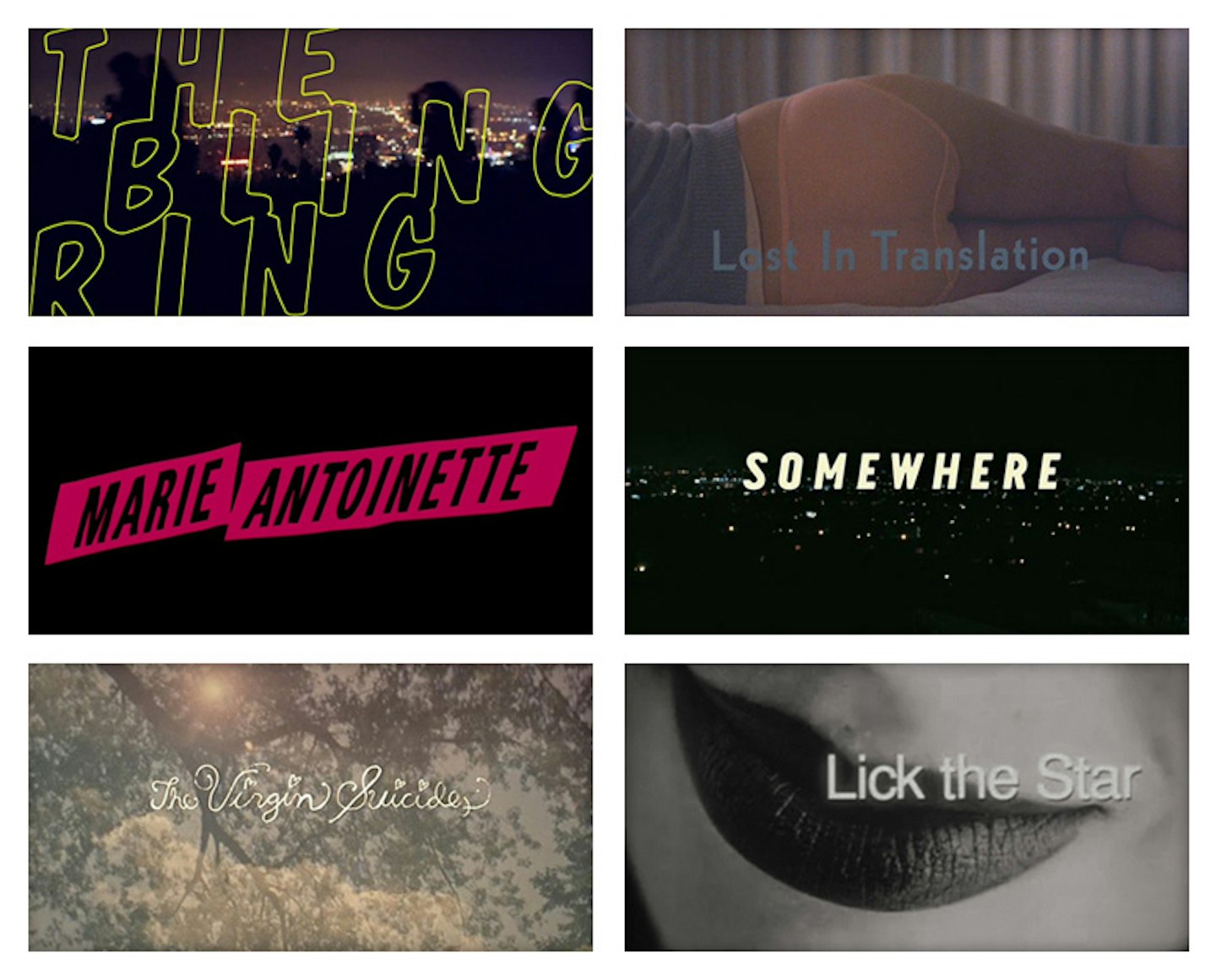
Few moviemakers give better sans-serif than Coppola. Her films introduce themselves with a distinctive slab of text, ranging from delicate and demure (The Virgin Suicides) to punky and loud (Marie Antoinette). They stem from a long-standing collaboration with English graphic designer Peter Miles.
“It’s funny, I’ve never looked at this before. I always wanted to be a graphic designer, so I enjoy this part of it and I really enjoying working with Peter Miles. It was Peter’s idea to make The Bling Ring’s [title card] so big. I wanted the movie to be obnoxious, and I wanted that neon yellow, but I would have never have thought to make the titles so big. He made them bling. Scarlett (Johansson) was a good sport in that shot in Lost In Translation. It was based on a painting by John Kacere (*a copy of the painting, ‘Jetta’, hangs on Charlotte’s *hotel room wall in the film), but, yeah, it was brave of her to do that. Lick The Star? I think I did on the computer. It’s pretty basic! (laughs)"
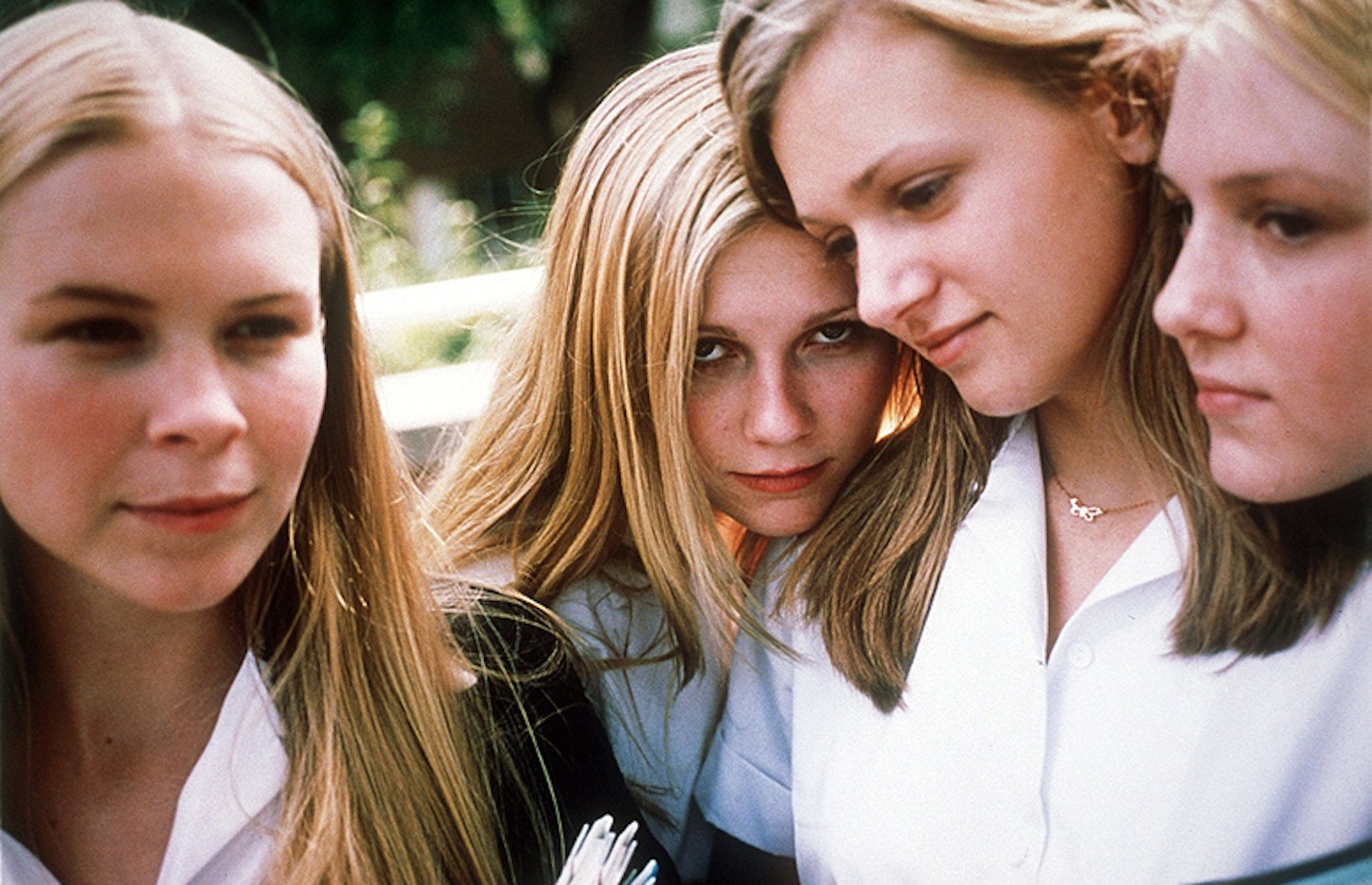
The kind of teen girls’ coming-of-age tale that, in retrospect, seems such a perfect fit for Coppola’s empathetic eye, Jeffrey Eugenides’ 1993 novel introduced the first-time director to Kirsten Dunst, a friend and muse who cameos briefly in The Bling Ring, and won her influential admirers in the critical community.
“When I made [1998 short film] Lick The Star it felt like something I knew how to do, but if I hadn’t made The Virgin Suicides then I probably wouldn’t have thought to direct a movie. In fact, I still wasn’t thinking I’d direct a movie! (Sonic Youth’s) Thurston Moore introduced me to the book and I just loved it so much that when I heard someone was adapting it, my first thought was, “Oh, I hope they don’t mess it up!” I started working on a script and somehow convinced the producers to let me do it. When I was growing up a lot of teen movies felt artificial, with 30 year-olds playing teenagers, so I wanted to make something that I could really tune into. Besides John Hughes’ movies, which I loved, there wasn’t always a lot of care put into having beautiful cinematography in kids’ movies either. You know, I felt they should have good aesthetics, too."
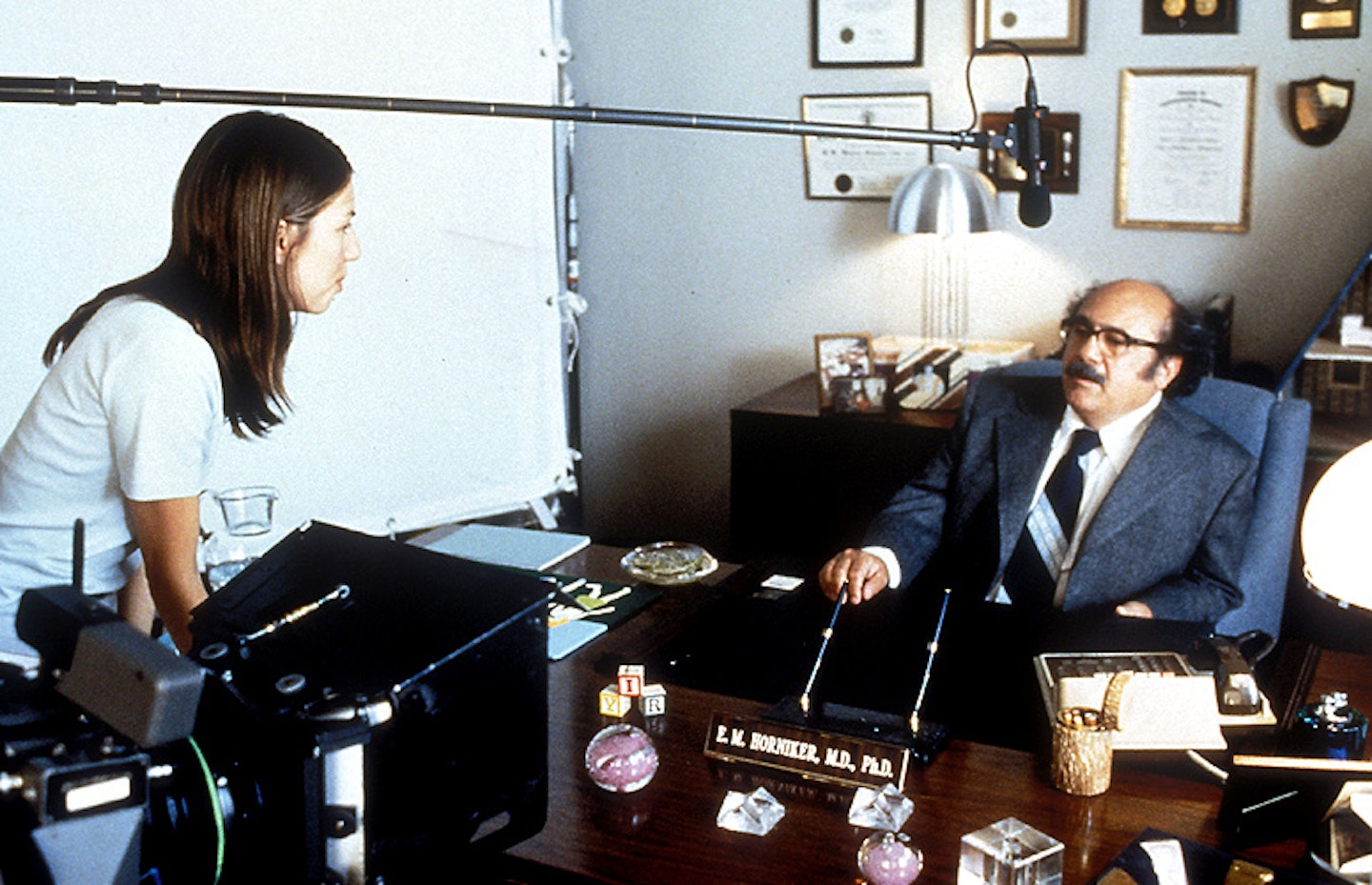
Another writer’s stab at adapting The Virgin Suicides dosed it with an odd concoction of sex and violence that horrified Coppola. Fearing for the purity of Eugenides’ novel, she set to work on an alternative screenplay that, against her dad’s advice, was successfully pitched to Muse Productions and scored her a debut directorial job.
“That’s me as a young’un. I’ve always enjoyed working with actors and I haven’t really changed the way I work with them since then. I just try to be open to things. A lot of it is in the casting, in picking people who see the character the same way you do and in trusting them going into it. Part of the process of meeting actors before you shoot is about finding people who see it like you. Then you let them do their thing."
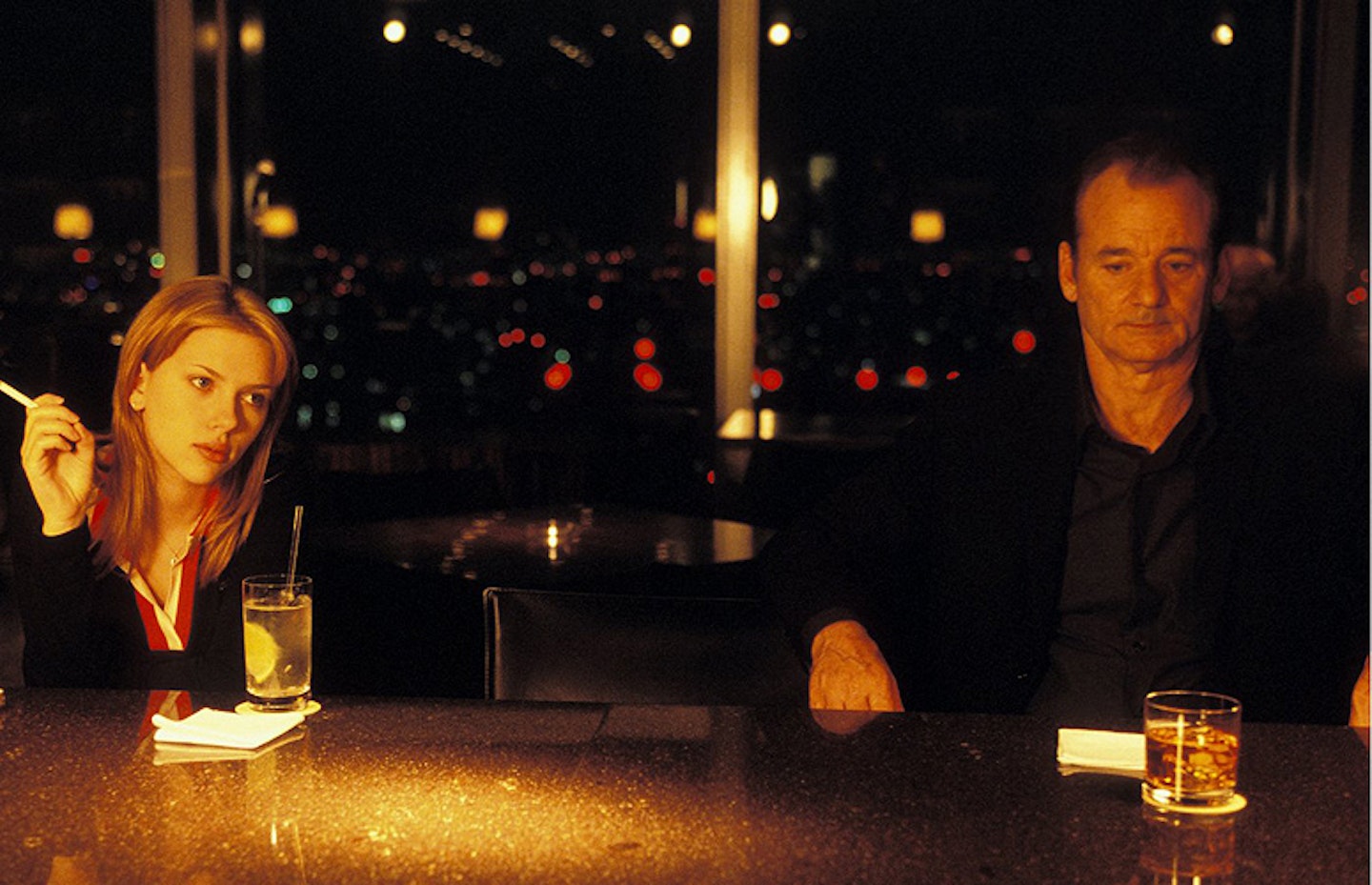
Shot in 27 days, the majority amid the systolic bustle and neon nightscapes of Toyko, Coppola’s ode to alienation and kinship is her biggest hit to date. On top of an unexpected huge $120m box-office haul, the film picked up four Oscar nominations. She won for Best Original Screenwriter.
“It’s still my most personal film. It was a story about these people who are kind of lost in their lives and who meet and have this moment together. I can’t really remember too much about this shot – it’s all blurred now! – but this is the moment when Charlotte and Bob first meet. I wanted Scarlett (Johansson) to be this young Lauren Bacall character and for Bill (Murray) to have a suave side. People still ask me what Bill whispers at the end, but I just say what Bill Murray always says: it’s between the two of them. Honestly, I never expected people to latch onto that. In fact, I was surprised so many people related to the movie, because I felt like I was doing something personal and indulgent. That was a fun surprise!
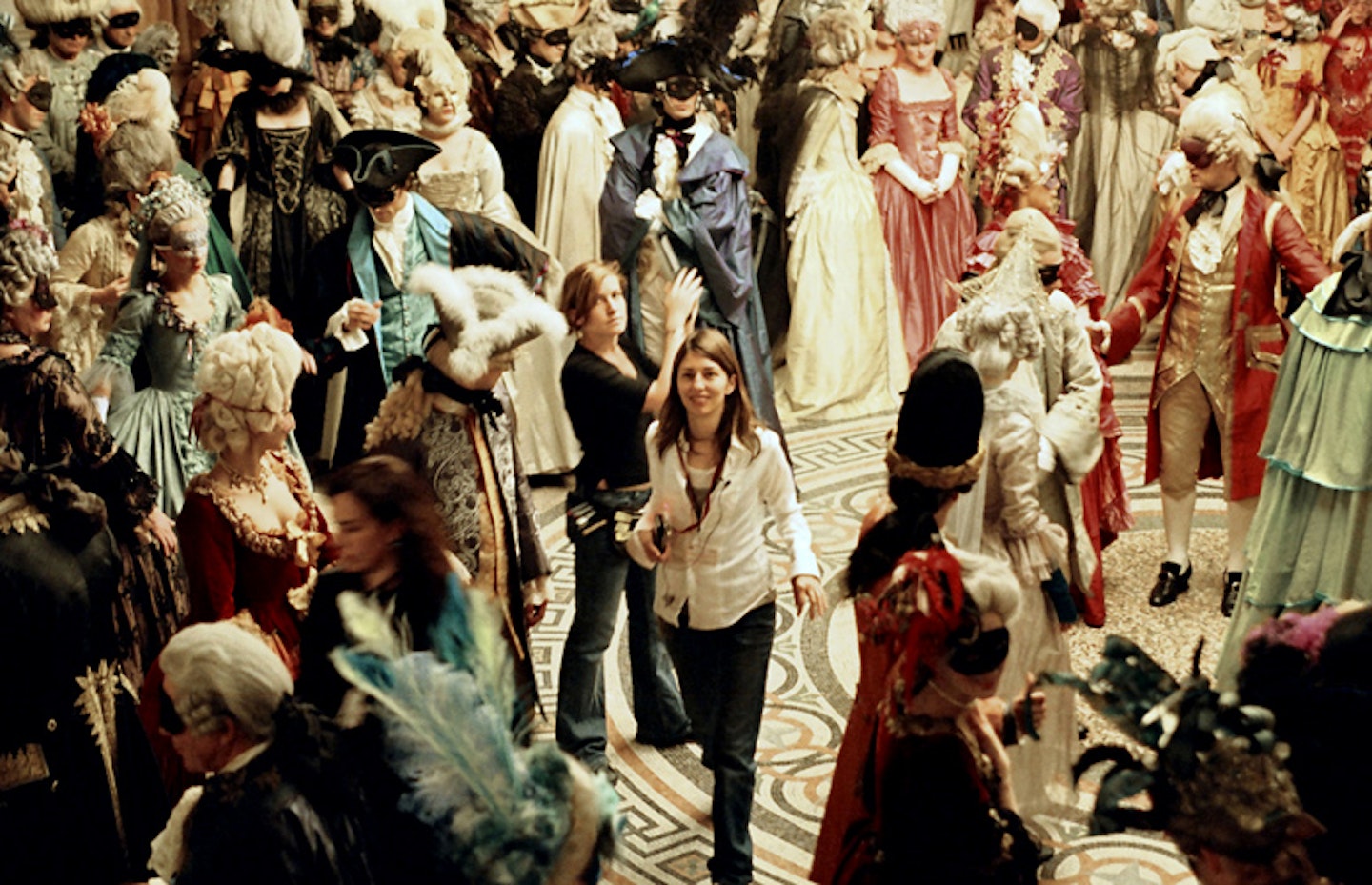
If Lost In Translation’s rapid location shoot and unexpected commercial success made the whole filmmaking gig seem easy, Marie Antoinette quickly disavowed Coppola of that notion. Well, not that quickly. “It was long, it was a long shoot,” she recalls with something approaching a shudder.
“I’m glad I got to do Marie Antoinette because I loved working in that period, but it was *really *tiring. My other shoots have been, like, six or seven weeks, but this was a much bigger scale. It was so different. I’d always loved the tradition of period movies like Amadeus and I was trying to do that in a kind of a youthful, irreverent way. It definitely had strong reactions: some people didn’t like and a lot of people really did, but I wanted to try something different. The soundtrack was a lot of fun, too. My whole relationship to that period was through the New Romantics when I was a kid, so I created a New Romantic video version of the period. I look so young here! I think this particular shot was a big masquerade ball scene at the Palais Garnier in Paris, which was exhausting. I was glad to go back to doing something simple and quiet."
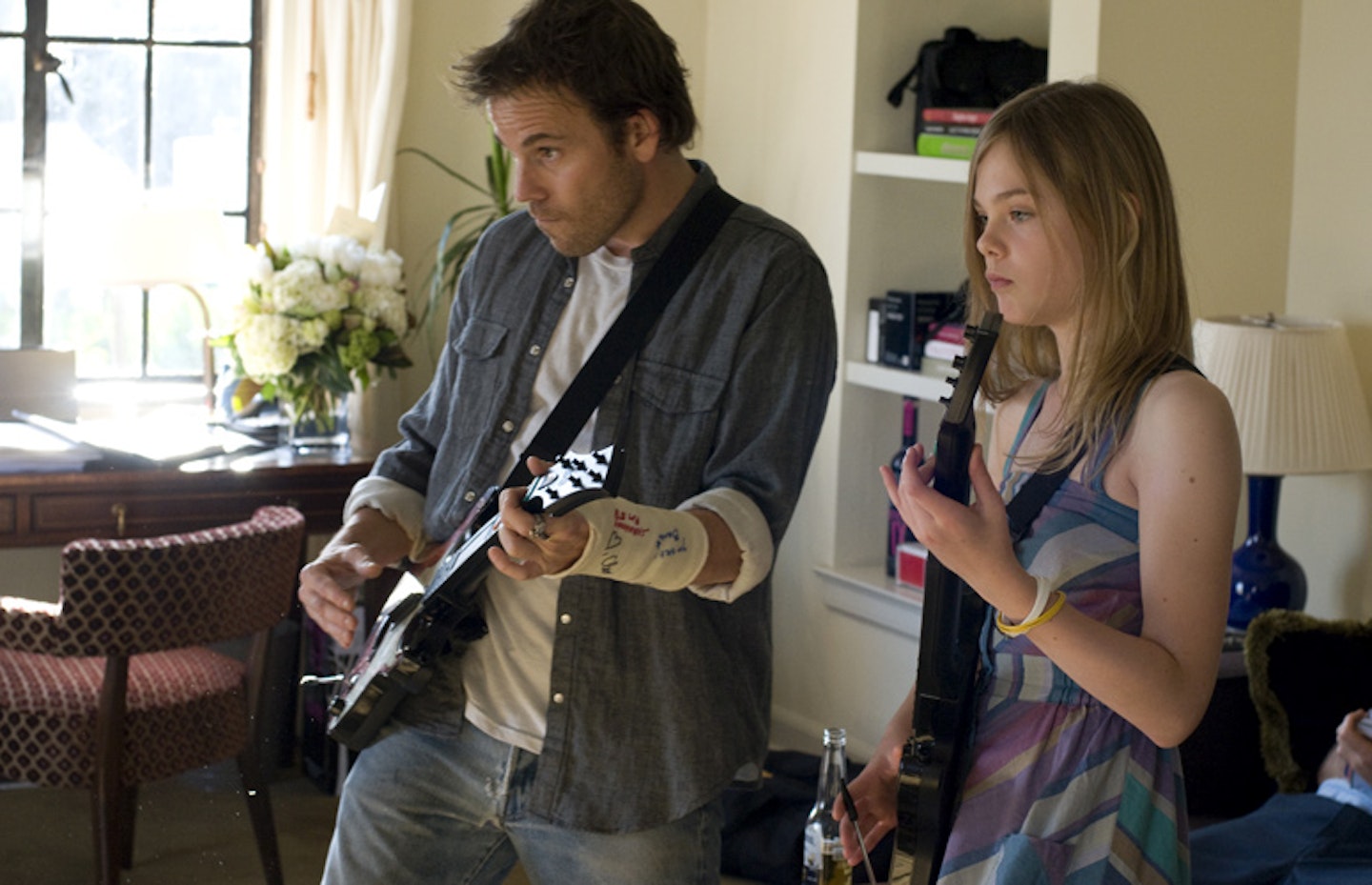
Exploring the ennui of celebrity, Somewhere put an Antonioni-esque glaze on Hollywood’s inner workings and offered Coppola a route back to the style of intimate filmmaking she’s most comfortable with. It’s set in the world where she grew up, at the heart of which sits West Hollywood’s famous Chateau Marmont. “I wanted to do something a lot more simple where I could just focus on one or two characters, and that was a little more quiet,” she remembers.
“I still like to go to the Chateau. The same staff are still there, it’s nice. In fact, when I stayed recently they put me in this room, but I asked to be moved because it was too weird to be in the same room we shot in (laughs). [Stephen Dorff’s] plaster cast was a continuity challenge, because we were shooting things out of order. We had to keep changing the number of signatures depending on where we were in the story. Can I play Guitar Hero? Nope, I based that on a friend of mine who plays it with his daughter. I thought that was sweet."
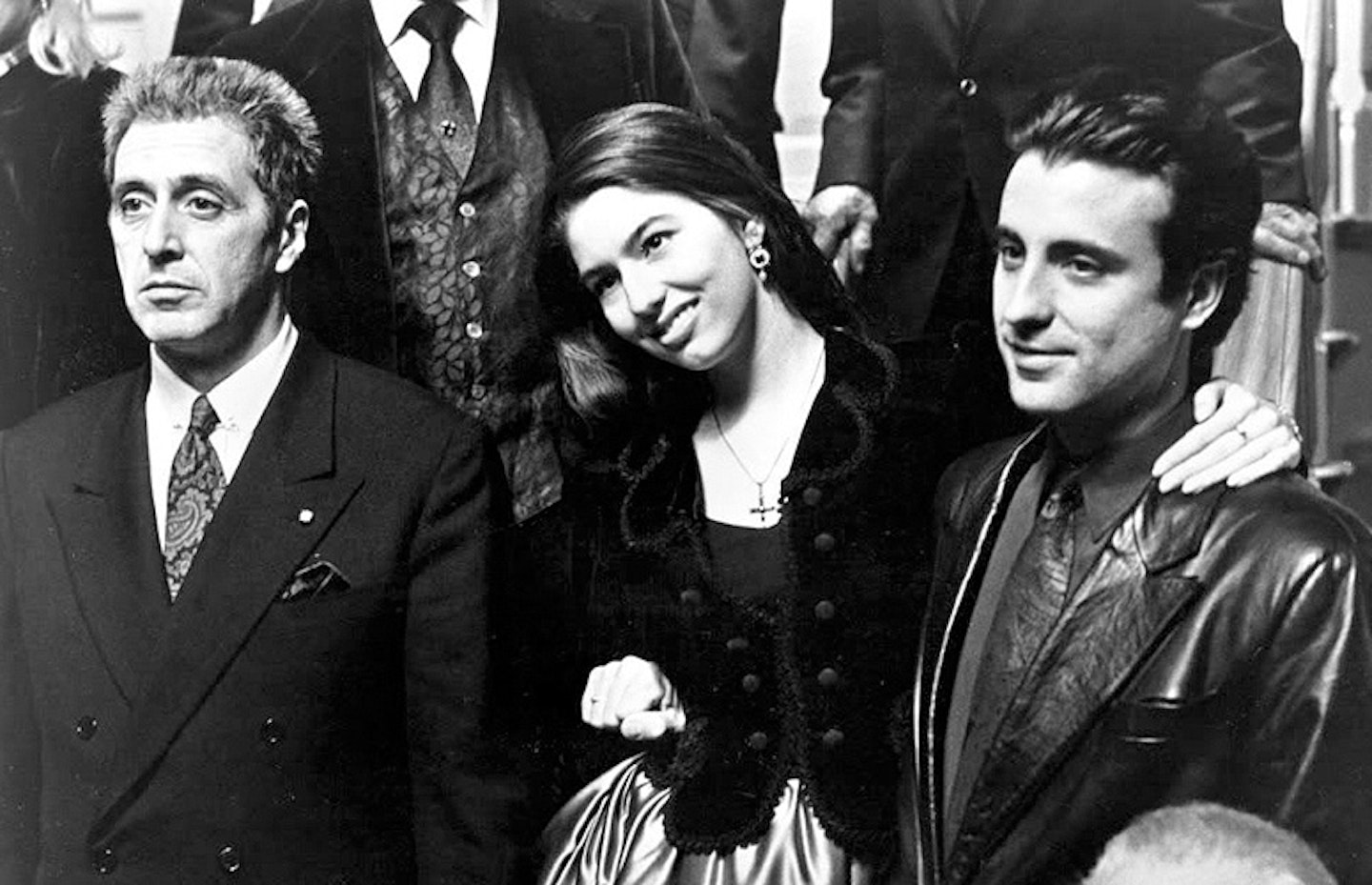
Winona Ryder’s twelfth hour withdrawal from the third Godfather film left the key role of Mary Corleone to Sofia, throwing her to the lions in the process. Ferocious levels of anticipation from fans and critics mingled with whispered accusations of nepotism and left the 18 year-old facing a cacophony of heckles of the cheap seats. “Well-meaning people tell me I am permitting a form of child abuse,'' her mother Eleanor admitted at the time.
“People gave me a hard time, and I hadn’t really thought about how public it would be, so yes, it was hard, but hard situations make you stronger and I know I learnt from it. I was 18 at the time and I didn’t really want to be directed by my dad – you don’t want to do what your dad tells you to do at that age – so that was a little awkward. The whole thing was awkward, but you move on."
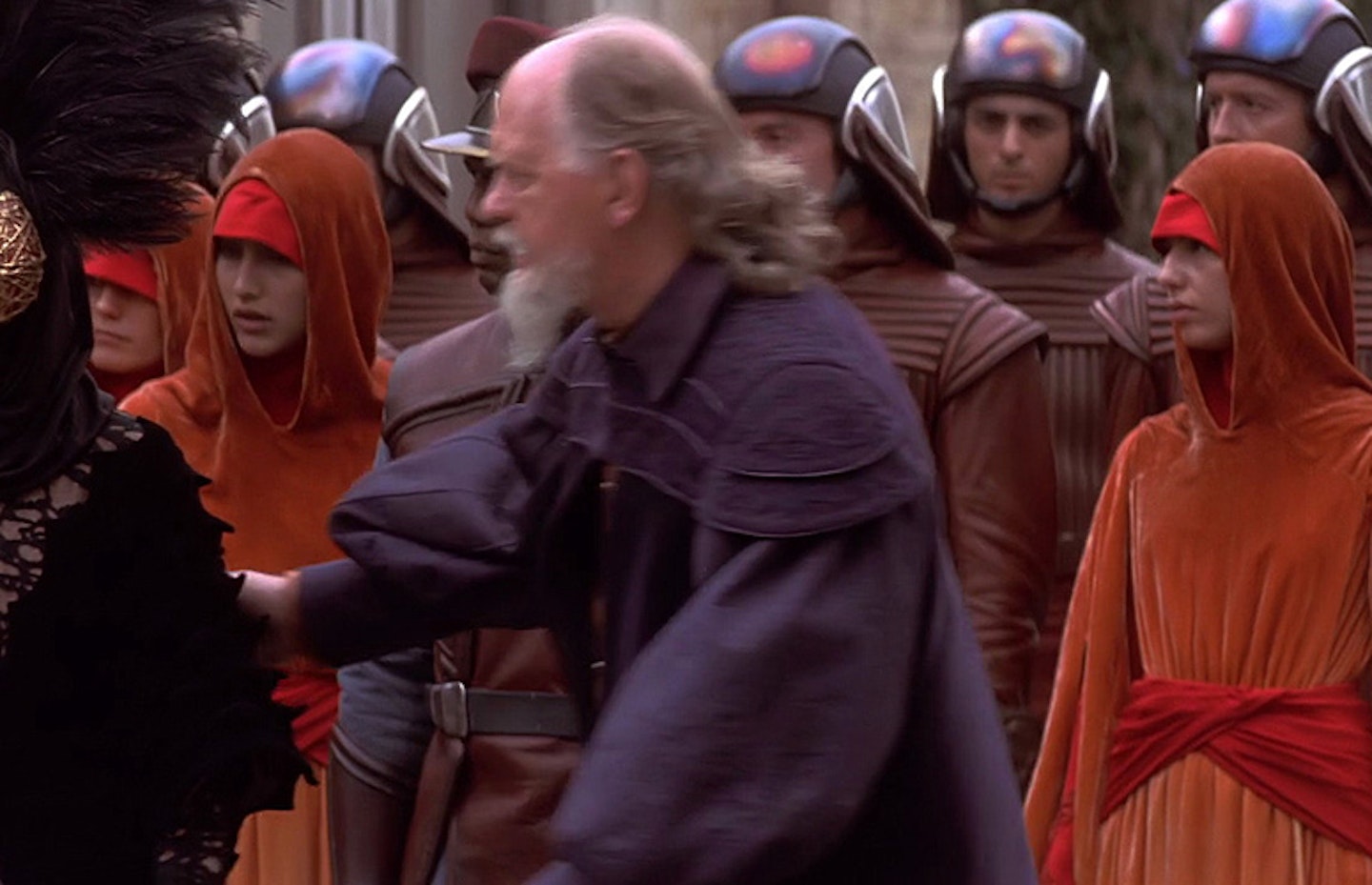
A non-speaking part and a minor footnote in Coppola’s career to date – although students of Naboovian protocol may disagree – her turn as Amidala's royal handmaiden Saché didn’t involve much more than standing about in an orange robe and looking a bit, well, royal.
“I’d forgotten about this! George Lucas is like an uncle to me – he used to send me and my brother Roman Star Wars toys when we were little – so when I heard they were making The Phantom Menace I thought it’d be so fun to see how they make them. I was working on the script for The Virgin Suicides at the time. I asked George if I could come and watch the shoot, and he asked if I wanted to be in the royal entourage. It seemed like a good vantage point to watch without getting in the way (laughs). I’m at the back with a hood on and you can’t really see me. I don’t even remember what my character was called. I know nothing about the new films, but I’ll be interested to see them. There’s plenty of pressure on J. J. Abrams!"
